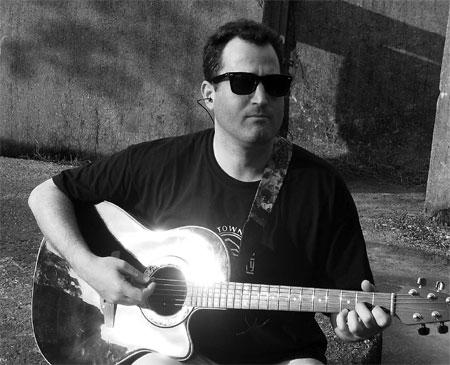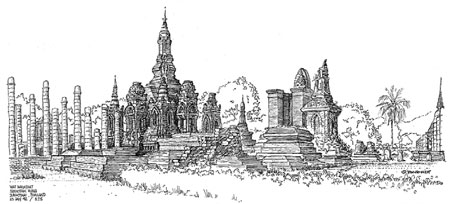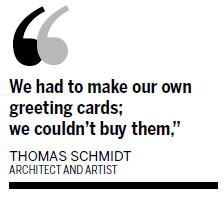| Radiology Room |
| Ultrasound Room |
| Surgery Room |
| Laboratory Room |
| Comprehensive Room |
| Pediatrics Room |
| Dental Room |
| Medical operation instruments |
| Hospital Furniture |
| Medical supplies |
News Center
Finding new range
When he turned 40, architect Thomas Schmidt unleashed the flip side of his personality and added cartoon books, stand-up comedy and new-age music to his pursuits. Rebecca Lo in Hong Kong picks his brain.
It's a Wednesday afternoon and I'm late for my meeting with Hong Kong-based American architect Thomas Schmidt. Really late. Wandering around the industrial area of Chai Wan in east Hong Kong island, I finally stumble across Fortune Factory Building. A plain, dark-brown wooden door on the top floor tells me that this is an architect's office - and it certainly jumps out against neighboring rusty metal gates.
I ring the doorbell, and Schmidt welcomes me into a large open space with raw concrete flooring, apologizing for luring me out to the depths of Hong Kong's outskirts.
|

|
|
Architect Schmidt has released two CDs featuring his own compositions. [Provided to China Daily] |
One entire wall is decorated with black-and-white hand sketches of iconic temples, churches and buildings from around the world, while a corner is strewn with musical instruments. The sparkling new pantry is outfitted with a Nespresso Citiz coffee maker and many bottles of wine; a cup of coffee is quickly followed by a glass of red as Schmidt begins a three-hour chat that is part stand-up comedy and part design lecture.
Schmidt's day job is architecture - specifically, design solutions for Asian hotel operators through his firm Sepia Design Consultants. Born in Chicago, Schmidt's family relocated to Denver, Colorado when he was five years old.
He credits his mother with influencing his decision to become an architect; she is a painter and encouraged him and his two sisters to draw at an early age.
"We had to make our own greeting cards; we couldn't buy them," he recalls.
|

|
|
Schmidt's black-and-white sketch of temples in Thailand. |
Upon qualifying as an architect, he worked for a local Denver firm that specialized in passive solar and sustainable design.
But he was desperate to get out of Colorado. He followed his girlfriend to New York City, then broke up with her and lost out on a job while there. Drifting around, he ended up in the ski-resort town of Vail, Colorado as a watercolor street artist for a summer.
Afterward, he bought a ticket to Hawaii with the money he made hawking his paintings to tourists. The year was 1989.
"There were a lot of Japanese investors and lots of big golf courses and hotels," Schmidt says. "Hawaii is Asia light. Culturally, it is very Asian and has an island mentality. I found it hard to be accepted at first."
He stayed for four years, working with hotel architect WATG and began doing consulting work in Hong Kong and Taiwan.
"I have always wanted to live in a foreign country," he confesses. "I fell in love with Hong Kong the first time I came here. The energy attracted me - it matched my personality."
|

|
After settling in Hong Kong in 1997, he began to specialize in the operational side of hotel design, first for Marriott and then as vice-president of technical services for Le Meridien, overseeing its development in the Asia Pacific region.
He started Sepia in 2003 to help owners "reposition" existing properties.
"Some projects are outdated and I show them a what-if concept that helps them make more money," he says.
"I'm always in a reactive mode and always putting out fires, because I can turn plans around quickly. I call myself a design paramedic: I fix other people's design emergencies. And when concepts don't work from an operational perspective, it is always related to the planning."
Schmidt took stock of his life upon his 40th birthday. "I had a bucket list of things that I wanted to do - and started to do them."
An avid in-situ sketch artist ever since his summer in Vail, he had a massive collection of hand drawings from his travels.
"Film was expensive and bulky then," he notes. "Sketching was a great way to learn about the architecture of a building because it forced me to study every aspect of it. It's relaxing, like stopping to smell the roses.
"A typical sketch would take two to four hours and people would gather around me to watch. It was a good way to meet local people wherever I was."
He first turned five books of drawings amassed from a backpacking trip through Borneo in the 1990s into Bumbling Through Borneo, a 90 percent autobiographical cartoon travel log with a strong environmental message.
It stars an animated version of Schmidt as he gets into a variety of scraps akin to an Asian version of the Hardy Boys mysteries, with a cast of colorful characters meticulously rendered in line drawings.
"Each panel took me three hours and I would do them by hand at first," he admits. "A third of the way through, I resorted to Photoshop!"
Next came Bumbling Through Sumatra, and Schmidt is currently working on his third book in the series set in his adopted home of Hong Kong.
"It is a fascinating case study for environmental issues," he notes. "It works in some ways, but it's also on a collision course. Air quality is a huge issue here."
He drew upon a childhood learning classical guitar by playing with a local jazz band.
So far, he has released two CDs with Jetopa featuring his own compositions and singing. "I sound sort of folksy, like Bob Dylan," he laughs. In 2007, he played with 100 or so other bands at the Colorado Music Festival.
He also indulged his closet stand-up comedian persona, performing at local club Take Out Comedy.
"I think that comedy is better when it's rehearsed," he states. "If you get six laughs per minute, you're doing pretty well. I tape and analyze all my acts to see how I can improve."
Ever the planner, Schmidt started Kakibubu as is the umbrella company for his more creative endeavors. "Music, cartoons - the fun side of what I do," he smiles.
If only more people's midlife crises could be as productive.






